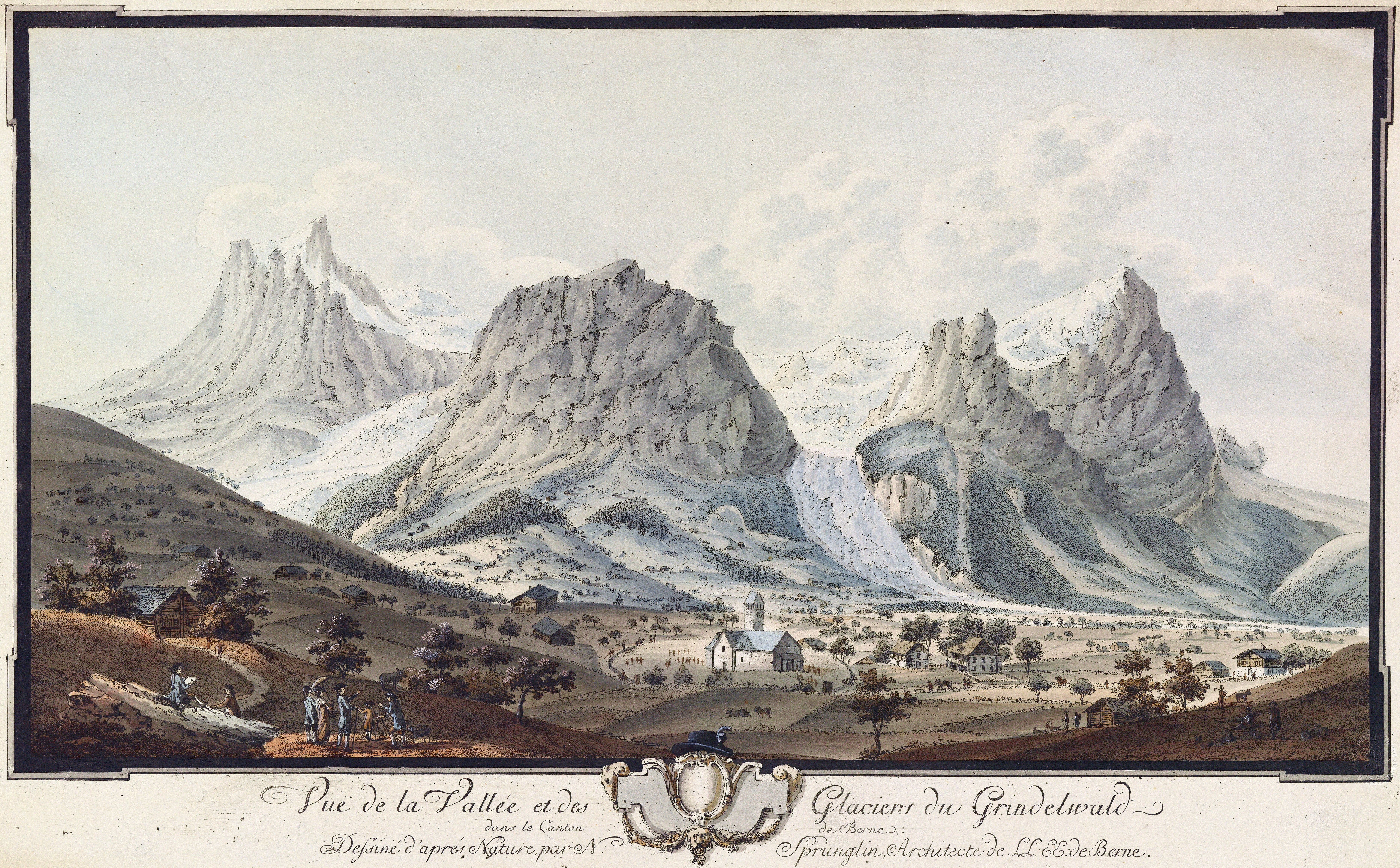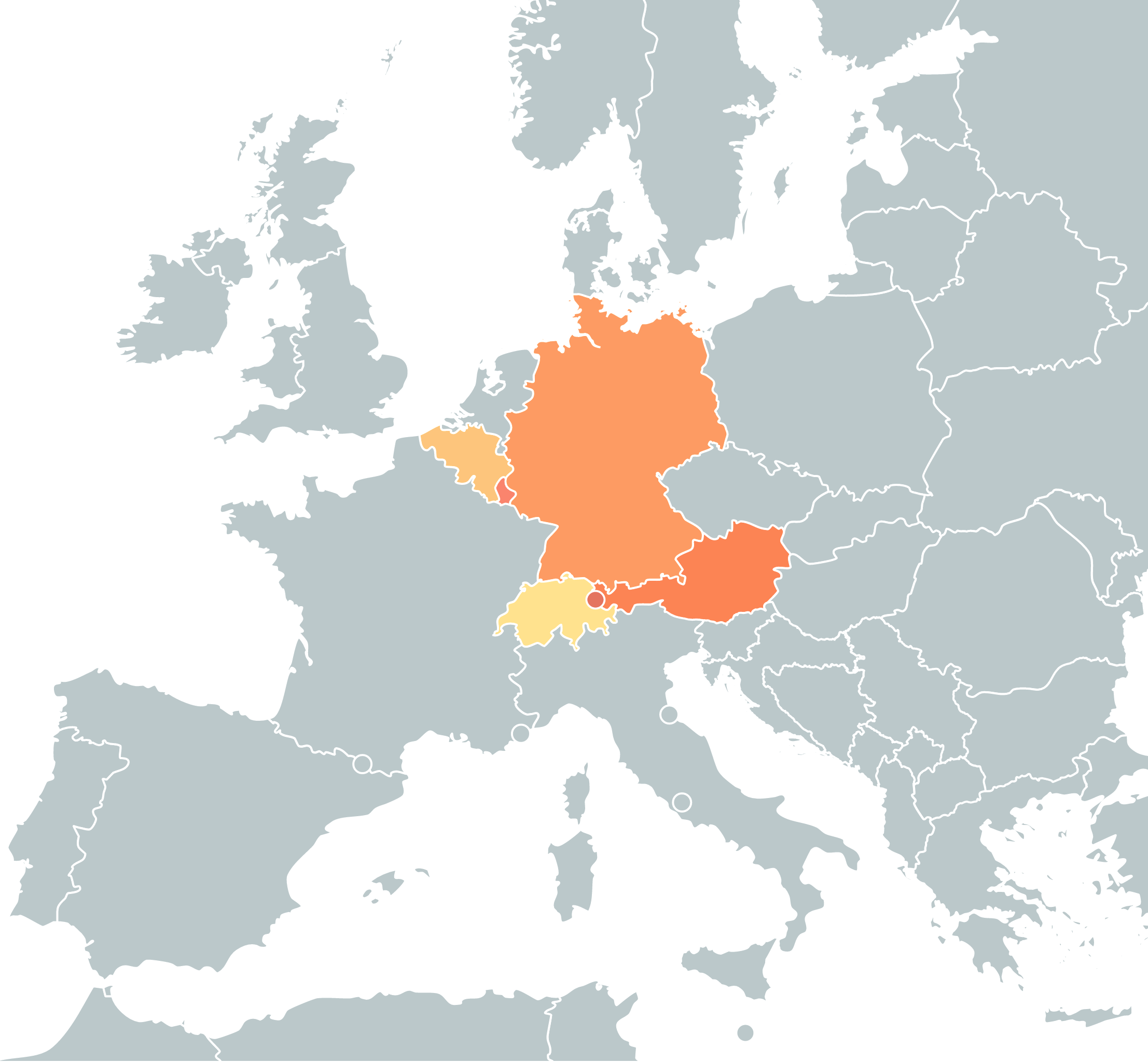|
Lütschental
Lütschental is a village and a municipality in the Interlaken-Oberhasli administrative district in the canton of Bern in Switzerland. History Lütschental is first mentioned in 1238 as ''Liscinthal''. In 1275 it was mentioned as ''Lyzental''. During the Middle Ages the Lütschine valley was part of the '' Herrschaft'' of Unspunnen. During the 13th and 14th centuries, Interlaken Abbey acquired land and rights in the village until they eventually owned most of the land and people in the area. In 1349 the residents of the village joined other villages in the Bernese Oberland in an unsuccessful rebellion against the Abbey. In 1528, the city of Bern adopted the new faith of the Protestant Reformation and began imposing it on the Bernese Oberland. Lütschental joined many other villages and the Abbey in an unsuccessful rebellion against the new faith. After Bern imposed its will on the Oberland, they secularized the Abbey and annexed all the Abbey lands. Lütschental becam ... [...More Info...] [...Related Items...] OR: [Wikipedia] [Google] [Baidu] |
Interlaken-Oberhasli (administrative District)
Interlaken-Oberhasli District in the Canton of Bern was created on 1 January 2010, uniting the former Interlaken District, Interlaken and Oberhasli districts. It is part of the Bernese Oberland, Oberland administrative region. It contains 28 municipalities with an area of and a population () of 48,763. Mergers * On 1 January 2014 the former municipality of Gadmen merged into the municipality of Innertkirchen.Nomenklaturen – Amtliches Gemeindeverzeichnis der Schweiz accessed 13 December 2014 References {{coord, 46, 04, N, 7, 03, E, source:kolossus-eowiki, display=title Districts of the canton of Bern ...[...More Info...] [...Related Items...] OR: [Wikipedia] [Google] [Baidu] |
Grindelwald
Grindelwald is a village and municipality in the Interlaken-Oberhasli administrative district in the canton of Berne. In addition to the village of Grindelwald, the municipality also includes the settlements of Alpiglen, Burglauenen, Grund, Itramen, Mühlebach, Schwendi, Tschingelberg and Wargistal. Grindelwald village is located at above sea level. Mentioned for the first time in 1146, it has become a major tourist destination of both Switzerland and the Alps since the golden age of alpinism in the 19th century. It is notably overlooked by the section of the Bernese Alps from the Wetterhorn to the Eiger, making up a huge natural barrier. Together with the adjacent valley of Lauterbrunnen, the valley of Grindelwald forms part of the Jungfrau Region of the Bernese Oberland, between Interlaken and the main crest of the Bernese Alps. Similarly to Lauterbrunnen, Grindelwald is connected to Interlaken by the Bernese Oberland Railway and is the start of the Wengernalp Railwa ... [...More Info...] [...Related Items...] OR: [Wikipedia] [Google] [Baidu] |
Gündlischwand
Gündlischwand is a village and municipality in the Interlaken-Oberhasli administrative district in the canton of Bern in Switzerland. Besides the village of Gündlischwand, the municipality also includes the hamlet of Zweilütschinen. History Gündlischwand is first mentioned in 1331 as ''Gundlisswant''. During the Middle Ages parts of the Lütschine valley were owned by a variety of local nobles. By 1331, Interlaken Abbey acquired the land and rights to the village of Gündlischwand. It remained under the Abbey's control until 1528 when Bern adopted the new faith of the Protestant Reformation and secularized the Abbey and all its land. The modern municipality also includes the village of Zweilütschinen at the confluence of the White and Black Lütschine rivers. In 1580 a bridge was built over the rivers at Zweilütschinen, allowing more local trade to flow through the village. In the late 16th century rich ore deposits were discovered in the Lauterbrunnen valley. Af ... [...More Info...] [...Related Items...] OR: [Wikipedia] [Google] [Baidu] |
Iseltwald
Iseltwald is a village and municipality on the southern shore of Lake Brienz in the Bernese Oberland region of Switzerland. Politically, the municipality is located in the Interlaken-Oberhasli administrative district of the canton of Bern. History Iseltwald is first mentioned in 1146 as ''Iseltwalt''. During the Middle Ages, a castle was built on the peninsula near the village for the Lords of Matten. In 1146, King Conrad III gave Interlaken Abbey one quarter of the village. Over the following years, the Abbey attempted to expand their power in the village. After the Swiss Confederation gained de facto independence from the House of Habsburg, the Abbey remained a strong supporter of the Austrian dynasty. The Abbey launched several raids into Unterwalden to support Habsburg ambitions. In response, in 1342, troops from Unterwalden attacked and burned Iseltwald. A few years later, in 1348-49, the village unsuccessfully rebelled against the Abbey. In 1528, the city of Bern ... [...More Info...] [...Related Items...] OR: [Wikipedia] [Google] [Baidu] |
Lauterbrunnen
, neighboring_municipalities= Aeschi bei Spiez, Blatten (Lötschen) (VS), Fieschertal (VS), Grindelwald, Gündlischwand, Kandersteg, Lütschental, Reichenbach im Kandertal, Saxeten, Wilderswil , twintowns = } Lauterbrunnen is a village and municipality in the Interlaken-Oberhasli administrative district in the canton of Bern in Switzerland. The municipality comprises the other villages of Wengen, Mürren, Gimmelwald, Stechelberg and Isenfluh, as well as several other hamlets. The population of the village of Lauterbrunnen is less than that of Wengen, but larger than that of the others. The municipality comprises the Lauterbrunnen Valley (german: Lauterbrunnental), located at the foot of the Bernese Alps. It is notably overlooked by the Eiger, Mönch and Jungfrau and many other high peaks. The valley, drained by the White Lütschine, comprehends the Soustal, the Sefinental and the upper Lauterbrunnen Valley with Untersteinberg. The valley includes several glaciers. ... [...More Info...] [...Related Items...] OR: [Wikipedia] [Google] [Baidu] |
Bettlach, Switzerland
Bettlach (; french: Bâche) is a municipality in the district of Lebern in the canton of Solothurn in Switzerland. History Bettlach is first mentioned in 1181 as ''Betelacho''. In 1279 it was mentioned as ''Bettelage'' and in 1329 as ''Betlach''. Geography Bettlach has an area, , of . Of this area, or 46.4% is used for agricultural purposes, while or 37.6% is forested. Of the rest of the land, or 13.4% is settled (buildings or roads), or 1.4% is either rivers or lakes and or 1.2% is unproductive land.Swiss Federal Statistical Office-Land Use Statistics 2009 data accessed 25 March 2010 Of the built up area, industrial buildings made up 1.2% of the total area while housing and buildings made up 7.9% and transportation infrastructure made up 3.4 ... [...More Info...] [...Related Items...] OR: [Wikipedia] [Google] [Baidu] |
Gsteigwiler
Gsteigwiler is a municipality in the Interlaken-Oberhasli administrative district in the canton of Bern in Switzerland. Gsteigwiler belongs to the Small Agglomeration ''Interlaken'' with 23,300 inhabitants (2014). History Gsteigwiler is first mentioned in 1333 as ''Wiler''. The village first appears during the Middle Ages when it was owned by local nobles. In 1310 they donated the village to Interlaken Abbey. It remained in the hands of the Abbey until Bern accepted the Protestant Reformation and secularized the Abbey in 1528. Under Bernese rule it became part of the new bailiwick of Interlaken and remained part of the district of Interlaken until it was dissolved in 2009. The village remained isolated until the Wilderswil station of the Bernese Oberland Railway was built nearby in 1890. Two years later the Schynige Platte Railway, a rack railway, was built from Wilderswil, through the village but without a station, to Breitlauenen on the Schynige Platte mountains. T ... [...More Info...] [...Related Items...] OR: [Wikipedia] [Google] [Baidu] |
Lütschine River
The Lütschine is a river in the Bernese Oberland region of Switzerland. The Lütschine proper runs from Zweilütschinen, where its two tribututaries join, to Lake Brienz at Bönigen. The Schwarze Lütschine, or Black Lütschine, flows from Grindelwald to Zweilütschinen. The Weisse Lütschine, or White Lütschine, flows from the Lauterbrunnen Valley to Zweilütschinen. The common stretch of the river has a length of , whilst the Schwarze Lütschine is long and the Weisse Lütschine is long. Both branches of the Lütschine include a large number of mountain streams as tributaries. A notable tributary of the Schwarze Lütschine, emerging from the gorge of the Lower Grindelwald Glacier, is confusingly referred to as "Weisse Lütschine". The highest point of the drainage basin is the Jungfrau.1:25'000 Swisstopo topographic map A story passed on by word of mouth showing friendly banter between villagers that lived on the two rivers is that the people on the Weisse Lütschine said t ... [...More Info...] [...Related Items...] OR: [Wikipedia] [Google] [Baidu] |
Gsteig Bei Interlaken
Gsteig bei Gstaad is a municipality in the Obersimmental-Saanen administrative district in the canton of Bern in Switzerland. Gsteig was formerly known by the French name of ''Châtelet''. History Gsteig is first mentioned in 1312 as ''Chastelet''. In 1453, it was mentioned as ''Steig''. The villages of Gsteig and Feutersoey grew up along the roads over the Col du Pillon and the Sanetsch Pass. During the Middle Ages, a castle was built in the valley to protect and control the passes. The castle is first mentioned in 1458 and today is in ruins. At one time there was a settlement at Ussers Gründ which was destroyed by a landslide. Originally Gsteig was part of the district and parish of Saanen. The village church of St. Theodul was consecrated in 1453. It became a filial church of Saanen in 1500. In the early 16th century, Bern adopted the new faith of the Protestant Reformation, however Gsteig did not convert until 1556. Traditionally the villagers practiced s ... [...More Info...] [...Related Items...] OR: [Wikipedia] [Google] [Baidu] |
German Language
German ( ) is a West Germanic language mainly spoken in Central Europe. It is the most widely spoken and official or co-official language in Germany, Austria, Switzerland, Liechtenstein, and the Italian province of South Tyrol. It is also a co-official language of Luxembourg and Belgium, as well as a national language in Namibia. Outside Germany, it is also spoken by German communities in France ( Bas-Rhin), Czech Republic (North Bohemia), Poland ( Upper Silesia), Slovakia (Bratislava Region), and Hungary ( Sopron). German is most similar to other languages within the West Germanic language branch, including Afrikaans, Dutch, English, the Frisian languages, Low German, Luxembourgish, Scots, and Yiddish. It also contains close similarities in vocabulary to some languages in the North Germanic group, such as Danish, Norwegian, and Swedish. German is the second most widely spoken Germanic language after English, which is also a West Germanic language. German ... [...More Info...] [...Related Items...] OR: [Wikipedia] [Google] [Baidu] |
Blazon
In heraldry and heraldic vexillology, a blazon is a formal description of a coat of arms, flag or similar emblem, from which the reader can reconstruct the appropriate image. The verb ''to blazon'' means to create such a description. The visual depiction of a coat of arms or flag has traditionally had considerable latitude in design, but a verbal blazon specifies the essentially distinctive elements. A coat of arms or flag is therefore primarily defined not by a picture but rather by the wording of its blazon (though in modern usage flags are often additionally and more precisely defined using geometrical specifications). ''Blazon'' is also the specialized language in which a blazon is written, and, as a verb, the act of writing such a description. ''Blazonry'' is the art, craft or practice of creating a blazon. The language employed in ''blazonry'' has its own vocabulary, grammar and syntax, which becomes essential for comprehension when blazoning a complex coat of arms. Other ... [...More Info...] [...Related Items...] OR: [Wikipedia] [Google] [Baidu] |




